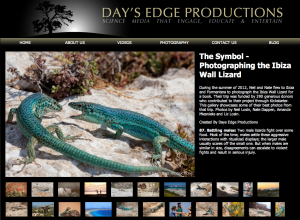Last month, Nate and I returned home after our Dos Equis-funded expedition to the Rwenzori Mountains in Uganda. We’ve been editing some photos from the trip, so you can get a taste of what we experienced during , while , and you can get a closer look at some of the of the Rwenzoris. We’re also producing a short film about the expedition, and we’ll be able to share more details about that soon!
It was a physically demanding expedition – we hiked for several hours every day, often carrying heavy camera gear, and we summited five 16,000-foot peaks in the space of seven days. We expected to lose a few pounds during the trek, but thanks to the excellent (and abundant) food provided by Augustine, the expedition cook, we didn’t end up losing much, if any, weight.
We ate our fair share of snacks on the trail, of course, and that’s how our latest video project began. I stuck with classic fare – granola bars and peanut butter crackers – but Nate had packed some calorie-dense protein bars in his backpack. I said, “If you really want lots of calories in a compact package, you should’ve just gotten a bunch of Snickers.” That’s when the disagreement started. Nate claimed that a standard-sized Snickers bar only had 120 Calories, a figure that I knew must be incorrect. I guessed 300 Calories. To make it interesting, we made a bet. It was a gentleman’s bet – no money involved – but the loser would have to eat five Snickers bars in one sitting… Very gentlemanly.
Unsurprisingly, I was right. Or nearly so… the standard Snickers bar in the U.S. contains 280 Calories (not for long, however – they are downsizing the bar to 250 Calories by the end of 2013… keeping the price the same, naturally). But rather than let Nate serve out his sentence in the privacy of his home, we decided we should parlay his misfortune into something positive… educational, even! So we made a video about Calories – what are they? And what do they do? So here it is! It’s kind of like a double feature; you get to watch Nate eat five Snickers bars AND learn something in the process. Enjoy!
To borrow a John Stewart line, “Are you not horrortained??”


















 Is it really almost 2012? Between research, teaching, photography, and films, the last year has really flown by at Day’s Edge Productions. Let’s take a quick look back at some of the things that made 2011 a great year at Day’s Edge:
Is it really almost 2012? Between research, teaching, photography, and films, the last year has really flown by at Day’s Edge Productions. Let’s take a quick look back at some of the things that made 2011 a great year at Day’s Edge: